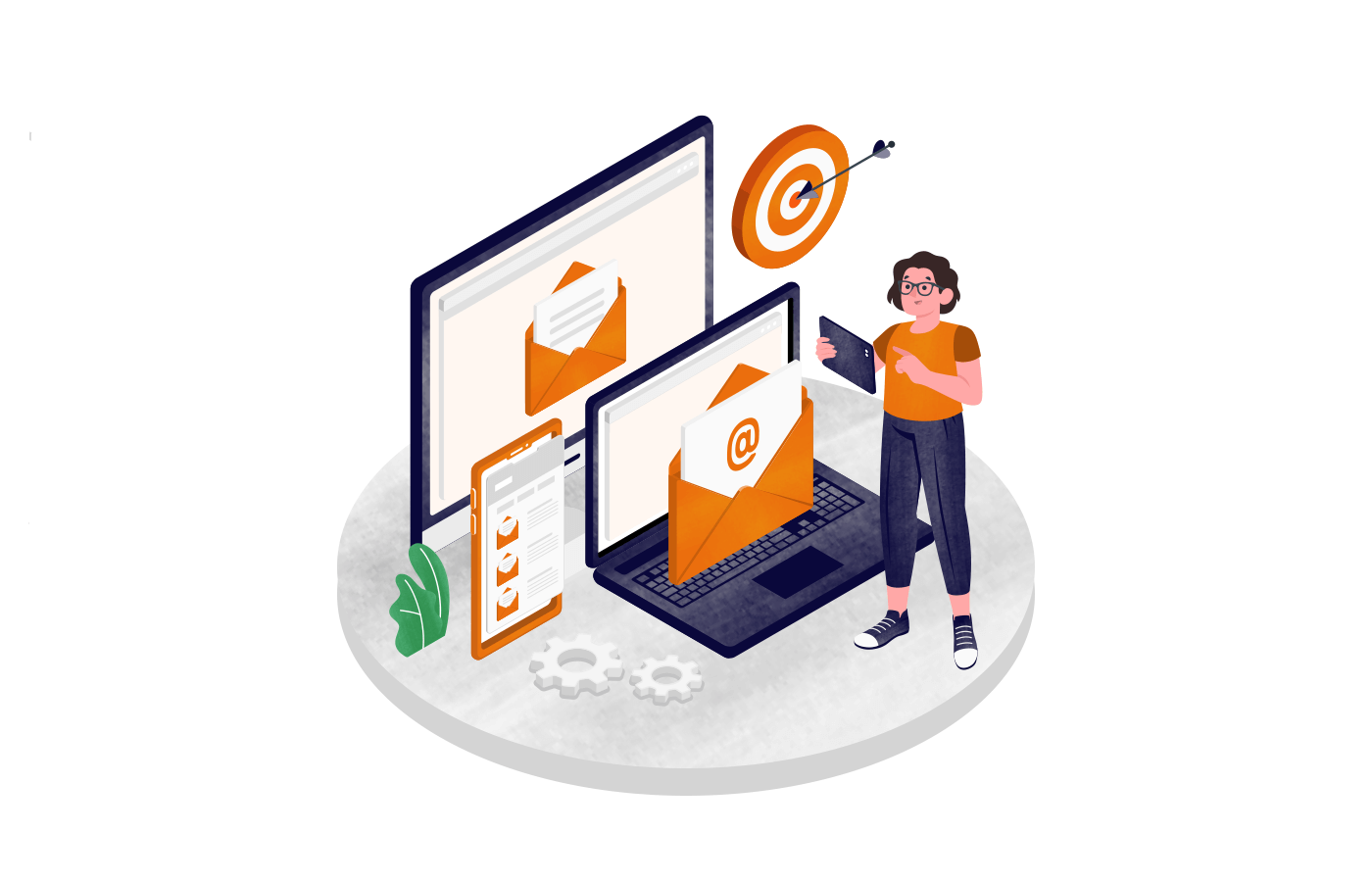In BtoB marketing, e-mail newsletters are used to generate leads by posting e-mail advertisements distributed to databases owned by external media (hereinafter referred to as DB), and e-mail newsletters sent to increase understanding and engagement of the company’s services after acquiring leads. , there are two aspects: the lead generation aspect.

An email newsletter sent to a specific lead is called a targeting email, and targeting emails are an effective method for both lead acquisition and
lead nurturing
.
This time, we will explain how to use targeting emails and how to send them.
Targeting emails and how to use them
Email newsletters that are segmented based on certain conditions or sent to segmented databases are called
targeting
emails, regardless of the delivery destination, such as external media databases or in-house databases.
With an external media database, in order to obtain more leads, select the media that has the target members, further segment them based on member attributes, and send an email DM.
For example, you can segment by target department, such as human resources for human resources services, sales/sales planning for SFA (sales support system), and marketing for
MA (marketing automation)
, or to shorten the order period. The delivery method will vary depending on the goal you are seeking in your email DM, such as segmenting by position such as an officer with decision-making authority or a manager or above, or segmenting by employee size if you want to approach a major company.

Additionally, if the database is owned by the company, an e-mail newsletter will be sent to the leads extracted by segmenting them based on characteristic conditions in order to encourage the acquired leads to make inquiries or request information.
An example of this would be to take advantage of the renewal of a service by segmenting dormant companies that have used the service in the past and sending notifications of the renewal.

How to deliver targeted emails
Let’s take a look at the flow of how to deliver targeted emails.
There are four major trends.
①Goal confirmation-KPI setting
② Target organization – segment condition settings
③ Content selection
④Title/text
This is common to both external media DBs and in-house owned DBs, but since the purpose of each is different, the contents of ① to ④ will vary greatly. Let’s take a closer look at each.

Posting email DM to external media database (
lead generation
)
① Goal setting-KPI
The goal is to acquire leads, as well as email DMs from external media.
KPIs are set in terms of the number of acquisitions and CPA (cost per acquisition), but in some cases they are set based on the degree to which a target list, such as a section manager or above, was acquired.
②Target setting-Segment
In order to segment, you need to organize your company’s targets in advance. For more information, please refer to ”
.”
Check the segmentable items for each media and compare them with the segment conditions you have organized in advance to determine the segment conditions.
HR Pro email advertisements can be segmented by [employee size], [job type], [industry], [position], and [listing].

The biggest advantage of targeted emails is that you can more efficiently acquire leads by focusing on core targets than by segmenting.
However, if there are multiple segment conditions, the number of emails sent will decrease, so the number of leads acquired will tend to decrease accordingly.Additionally, a minimum number of emails will be set, and delivery will not be possible due to insufficient number of emails. There are cases where this happens, so please be careful.
③ Content selection
Set up content for lead acquisition.
If you want to get a large number of results, downloadable materials such as survey results reports and seminar transcripts are very effective.

In addition, there has recently been a case where we have obtained a large number of leads by turning a column published in our own media into a white paper and promoting it as a downloadable material via email DM, which is extremely effective.
④Title/text

When promoting downloadable materials as content, the goal is to have people download the materials, so it is important to first create a title that encourages people to open the email, and then create a body that encourages downloads after the email is opened.
Regarding ③ and ④, please also refer to ”
”

Email newsletter distribution to in-house database (lead generation)
Since ③ and ④ are basically the same, I would like to take a look at ① and ②.
① Goal setting-KPI

When distributing e-mail newsletters to a company-owned database, if the goal is to encourage action from leads who have not made inquiries or requests for materials, the number of CVs (conversions) would be the KPI.
However, if you only send out service information to get CV, there is a high possibility that engagement will drop, the email open rate/click rate will drop, and you will be unsubscribed, so it is important to increase engagement while gaining CV. The trick is to keep going.
Sometimes the goal is to improve engagement, in which case email open rate and click rate are KPIs.
②Segment
There are various ways to distribute segments to a company-owned database, such as sending a discovery email to a dormant list as a segment condition to encourage another action, or searching for highly interested leads based on the number of times they opened or clicked on a certain email. Step-by-step emails that segment your audience and send them a series of content that further increases engagement can also be called a type of targeting email.
Targeting emails also include setting segment conditions for each industry and sending company examples that match those conditions.
However, the disadvantage is that it requires more man-hours to create content and emails for each segmented condition.
However, the biggest advantage of the targeting email mentioned earlier is that it allows you to focus on core targets more efficiently than by segmenting and gain leads and CV, so depending on the goals and KPIs you want to achieve, You need to decide how much to do.

summary
◆
Email newsletters that are segmented based on certain conditions or sent to segmented databases are called targeting emails.

◆
The biggest advantage of targeting emails is that you can narrow down to core targets and acquire leads more efficiently than by segmenting.
◆The disadvantage is that it is necessary to create content and emails for each segmented condition, which increases man-hours.

